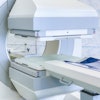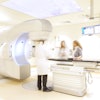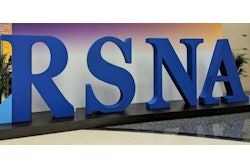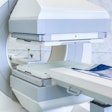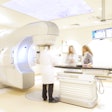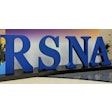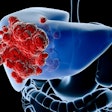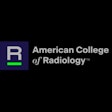Academic radiology researchers are trying to understand the coming new normal after a funding shakedown at the U.S. National Institutes of Health (NIH) that appears to deal a punishing $18 billion blow to health research spending.
President Donald Trump's office officially released the president's proposed fiscal year (FY) 2026 discretionary budget May 2. Referred to as "the skinny budget," it aims to sharply reform the NIH. With it, the second Trump administration pledged to focus research activities in line with the new Making America Healthy Again (MAHA) mantra.
The full budget is expected to be released around May 19, according to the Academy for Radiology and Biomedical Imaging Research, at which time the academy will host a town hall meeting. Some members of the academy say that so much change at once is causing confusion and raises serious questions about how to navigate moving forward, Executive Director Renée Cruea told AuntMinnie this week.
"It's so variable," Cruea explained, breaking down the issues piece by piece.
NIH grant terminations as of May 6 amount to nearly $1.9 billion for all U.S. institutions combined, and just over $1 billion for medical schools and hospitals alone, according to a new analysis by the Association of American Medical Colleges (AAMC).
A total of 777 NIH grants have been terminated, according to the AAMC's report. That number has fluctuated over time due to incomplete reporting and reinstatement of some grants as a result of lawsuits or other activities, the AAMC noted. The top five states impacted are: New York, North Carolina, California, Texas, and Florida.
AAMC's report analyzed 30 grant funding mechanisms, highlighting that 32% of the terminations are R01 grants that support independent research projects; 8% are F31 grants intended for training and career development grants awarded to graduate students to provide mentored research support; and 24% are UM1 grants that support large-scale research activities such as clinical networks and research programs. NIH grant watch shows the 2025 terminations.
"Universities are all handling these issues differently," Cruea added, recommending that researchers send a personal letter to their member of Congress.
"Pick your issue, whether it's you're concerned about the indirect being lowered or your own funding or local impacts, cuts to funding more broadly, and how it will impact your research, or you're trying to determine if you even want to stay in academic research," Cruea advised. "Talk to your members of Congress about that aspect of what you are doing."
The academy provides tools to write those letters. Several of the early career investigators within the academy are also interested in forming a social media campaign, Cruea said.
"They're trying to figure out ways to get their voice out there to be heard by their member of Congress," Cruea said.
Financial shock waves
Moving forward, NIH research will be funded to address chronic disease and other epidemics, implement all executive orders, and eliminate research on climate change, gender ideology, and divisive racialism, according to the Trump administration.
Witnessing financial shocks close to the medical research community has left some feeling generally pessimistic about their future, according to leaders at the Association of Academic Radiology (AAR) and its affinity group Radiology Alliance for Health Services Research (RAHSR).
In an email to AuntMinnie, members of the AAR and RAHSR discussed the impact of NIH grant funding instability. They narrowed federal funding conflicts to key terms.
“It seems clear that there will be politically defined areas, such as [diversity, equity, inclusion] DEI-related research, that are taboo for investigators," said University of Washington School of Medicine radiologist Jeffrey (Jerry) Jarvik, MD, AAR immediate past-president. "In the short term, NIH paylines are likely to remain relatively stable, but in the longer term, funding will likely decrease.”
Jarvik also said it is too soon to know either the short- or long-term impacts from grant cancellations.
"These have been incredibly demoralizing and will be very likely to result in young investigators leaving or never starting in the field of medical research," he told AuntMinnie via an AAR spokesperson. "This will almost certainly make it more difficult to attract the best and brightest to our academic institutions. It will likely be a recruiting boon for industry and other countries, who will siphon off U.S. scientific talent.”
 Gelareh Sadigh, MD, neuroradiologist, University of California Irvine.AAR
Gelareh Sadigh, MD, neuroradiologist, University of California Irvine.AAR
"NIH fundings are coming in different types and structures," said University of California Irvine neuroradiologist Gelareh Sadigh, MD, RAHSR past president, for AuntMinnie. "However, one of the most common types of grant funding for independent investigators is the R01 mechanism, which is usually a 5-year grant."
Sadigh was first funded by NIH in 2022 with the R01 mechanism and is in year three of these grants. "I am learning about NIH as we go," she said. "These funds are given on annual basis. So I assume this reserves the right for NIH to terminate grants; but usually these terminations are due to project not working out or not progressing."
R01 projects are usually multidisciplinary, involving a team of complementary expertise from different departments or institutions. "Principal investigators can be directly affiliated with radiology or medical imaging departments or they can be a co-investigator on a grant that is using radiology and medical imaging services,” Sadigh said.
Fallout in academic radiology
Fallout so far for some has involved researchers seeing delays in having their grants reviewed by study sections, delays in review by NIH scientific councils for funding decisions, delays in administrative reviews for noncompetitive renewals, and delays in issuance of notice of awards, according to Jarvik and Sadigh.
"There has been implementation of a hiring freeze across many departments that can delay or slow down research," Sadigh said. "There are also uncertainties about potential NIH cuts on indirect costs, which can affect funding labs' infrastructures.”
The funding issue has been covered directly or indirectly during different sessions of annual meetings of radiology organizations, including the AAR.
"The general sentiment, to borrow from Mel Brooks, is one of high anxiety," Jarvik said. "The current health research situation is unprecedented, combining great uncertainty about NIH funding with what seems like an organized attack on science in general. Not only is NIH threatened as an institution, but other federal agencies related to healthcare research (AHRQ, CDC, FDA) are also imperiled. At this point, most researchers I know are quite pessimistic."
Steps to take
Both Jarvik and Sadigh advise radiology researchers to take steps to diversify their funding as much as possible.
"Find other sources of funding (e.g., industry, or [Patient-Centered Outcomes Research Institute] PCORI)," recommended Sadigh. "Continue to work on their line of research and submitting grants to funding agencies but avoid using keywords that are targeted. Continue the research as it is important for the field to move forward despite limitations."
RSNA’s Research and Education (R&E) Foundation, for example, has provided more than $84 million in total funding for radiology since its establishment. RSNA R&E awarded $4.6 million in 2025.  Pamela Woodard, MD, chair of the RSNA Research and Education (R&E) Foundation Board of Trustees.RSNA
Pamela Woodard, MD, chair of the RSNA Research and Education (R&E) Foundation Board of Trustees.RSNA
Pamela Woodard, MD, chair of the RSNA R&E Foundation Board of Trustees, told AuntMinnie that the foundation's last grant application deadline ended prior to the announcement of proposed NIH change, but the foundation expected see some impact when the application cycle opens in October.
"With reduced NIH support, researchers must have access to alternative sources of grant funding," Woodard said. "This is obviously of concern among the research community. We are taking the current federal funding landscape into consideration as we identify priorities and opportunities to support our research community."
The RSNA with others has urged congressional leadership to provide robust funding for the NIH.
"Given that imaging is so key to patient health care, especially in the management of chronic diseases, we hope that the NIH will continue to fund imaging research initiatives," Woodard added. "Given what we hear, in terms of types of grants, we expect that federal funding may be more difficult to secure for research focusing on vulnerable populations and energy efficiency."
Imaging community response
In a statement, RSNA said it has joined over 600 biomedical and health research stakeholder organizations in urging congressional leadership to preserve protections against harmful research policy changes.
“RSNA continues to work with our policy and advocacy partners including Association of American Medical Colleges (AAMC), American College of Radiology (ACR) and Research America Alliance to address the issues that impact health care,” the society said.
Submitting congressional testimony toward federal FY 2026 funding, the ACR requested $51.3 billion for the NIH and $1.5 billion for the Advanced Research Projects Agency for Health (ARPA-H). The recommendation for NIH represents a $4.222 billion or 9% increase over federal FY 2025 funding, according to the ACR.
"Since its first National Cancer Institute (NCI) grant in 1968, ACR-collaborative, managed, led, or sponsored research entities and programs have been involved in over 500 NIH funded studies in diagnostic and interventional radiology, radiation oncology, and nuclear medicine," ACR CEO Dana Smetherman, MD, said in testimony. "As a result, the ACR recognizes the need for strong, predictable funding of our national research infrastructure to enable scientific discoveries and breakthroughs."
ACR, in addition to the AAR and RSNA, also signed onto a letter initiative led by the AAMC Ad Hoc Group for Medical Research, a coalition of nearly 400 patient and voluntary health groups, medical and scientific societies, academic and research organizations, and industry.
The Ad Hoc Group for Medical Research has compiled data suggesting that U.S. federal support for medical research through NIH amounts to roughly $138 a year per American and the return on investment has been substantial with significant declines in deaths from heart disease, cancer, and stroke.
Sudden jeopardy?
Research institutions without large endowments and other financial means face an uncertain future, according to Hermann Haller, MD, who runs the nonprofit MDI Biological Laboratory in Acadia National Park in Maine. Haller spoke at an April 30 U.S. Senate Appropriations Committee hearing.
For Haller, NIH cuts directed at indirect expenses, known as the 15% cap on facilities and administration costs, will put smaller institutions such as MDI at risk.
"We are dependent on the present system of indirect cost reimbursement," Haller said. "There is always room for improvement, and we are open for discussions, but the proposed 15 percent cap endangers our work and the work of all the other independent research institutions."
Also, in an update May 1, NIH announced a major change in the way parent grant recipients could spend federal money, over a lack of transparency with foreign subawards, "in which the United States government has a need to maintain national security."
With the policy announcement, NIH moved to prohibit foreign subawards from being nested under the parent grant. The new award structure will allow NIH to track the project’s funds individually, while scientific progress will be reported collectively by the primary institution, under the Research Performance Progress Report.
NIH anticipates implementing the new award structure by no later than September 30, 2025, prior to Fiscal Year 2026. NIH also said it continues to support direct foreign awards, and it would not retroactively revise ongoing awards to remove foreign subawards right now.
The Senate hearing held April 30 identified some of the biomedical research work that could get caught in the political crossfire over NIH grant funding and oversight. The meeting drew input and testimony from leaders of universities and medical colleges large and small, comprehensive cancer centers, and small independent research organizations.
With some institutions facing an uncertain future and an environment of high anxiety for researchers, some are hopeful for stability soon.
"I certainly have faith that we're going to get in a better position soon," Republican Sen. Cindy Hyde-Smith of Brook Haven, MS, said at the hearing, spotlighting healthcare challenges in Mississippi.
Unlike many other states, Mississippi lacks an NCI-designated cancer center, along with Louisiana and Arkansas. Researchers at the University of Mississippi Medical Center are trying to get there and need NIH support to do so, according to Hyde-Smith. "This situation requires Mississippians to travel distances for advanced cancer care," she said.
Hyde-Smith also noted the "profound impact" of the NIH Institutional Development Award (IDeA) program in Mississippi. Only certain states are eligible. "It has helped correct a historic imbalance in federal research funding, which has been concentrated at a small number of legacy institutions," Hyde-Smith said, adding that she hopes to continue that program through the IDeA Reauthorization Act.



